Falling off the Wagon…
I finally ran the other day and of course, it felt great. It was cold and windy, but those conditions kept me alert and in the moment.
Anyone who has experienced a lapse in running frequency has said, “I never want to forget how good it feels to run”. Yet, it happens to many runners, as I have learned from the many people who have reached out to support me in my recent slump. And I know that there are probably even more run slumpers who read my words and just thought to themselves “been there”.
The shiny, little hidden gem here is the fact that we get back at it. That falling off this wagon, or any other wagon we ride, does not equal failure. It is simply a bump in the road and the road can be long or the road can be short for any one of us. We don’t know how much time we have here on earth to run or jump or play or drink or anything, so…after we are done being displeased with our most recent, self-identified failures, the best thing we can do is reassess, make a plan and move in that direction. Can I get a “Hell Ya”?!
When I slump at anything, I usually fall hard, but the great thing about me, is that once I realize what’s going on, I bounce right back. I have the ability to be my own worst enemy, but I also love myself and have confidence that this too shall pass. So, I live knowing that mental health and addiction obstacles are a clear and present danger to my wellbeing, but I also know I have strength of character, commitment, dedication and a huge support team in my corner for the tough days.
Last month, I fell off the running wagon, but I didn’t fall from the sobriety wagon. When I opened my eyes and looked at the picture beyond the self-loathing I was stuck in, things looked amazing. I had not run consistently in over four weeks. During that time, I was without the safety net that I had so desperately erected to keep me occupied and feeling good, in order to remain estranged from my former bff, Cold Beer. I did not run, but I also did not drink at a time that I was being very hard on myself.
I can make it seem light and funny, but I am shedding tears as I write. I will never be free of the love sickness I have for alcohol, but maybe I am healing, maybe it’s not so raw, desperate and fragile anymore. I shake with fear at admitting this because I never want to let my guard down, but maybe I have gained strength against this addiction. Maybe running has made me stronger in multiple ways. Maybe I can loosen my white knuckle grip on running and truly just enjoy it for what it is. Maybe running is just running now, maybe it’s not therapy or a safety net or what’s keeping me sober. Maybe the strength I have to stay out of the liquor store is just coming from me, from some deep, strong permanent place inside of ME.
What an empowering thought to carry into the New Year; a New Year already full of mile markers. On New Year’s Day, I will celebrate my 40th birthday (without a New Year’s Eve hangover). I will think of my Mom as it’s really her day; she did all the work forty years ago. My celebration will include the Orillia Snowflake Series, New Year’s Day 10k and hopefully a few friends running with me and waiting for me at the finish.
January is also a time for me to recognize two years of being alcohol free. Two years sober. Two years of a new way of being. Who knows, maybe a new way of being will include being the new “Running Blog Idol” in the cards for the year to come. If not, I will still continue to write because I love it; maybe set up my own blog space. If anyone has any ideas or connections in the writing world, I could use the advice.
Lastly, but possibly very significant to my life, as I turn 40, I will enter a new running age group. All those local buggers who have been placing ahead of me in my current age group (yes, Kate Rheault, this includes you :p ) will no longer be my competition. Instead of being among the oldest runners in my age group, I can now look forward to being among the youngest.
Happy New Year to all of you and thank you for all of your comments and support!
Cheers (my glass has sparkling water in it)!
*a quick note: to celebrate the past two years, my 40th birthday, the years to come and to always have a reminder of the simplicity of the run, I got a permanent visual reminder, yesterday. This was also given to me as gift by my lifelong friend, Paula Vollick. Paula was also my sounding board and provider of constant encouragement when I initially decided to enter this contest. Thanks bunches, Polly Wogg!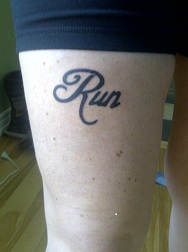







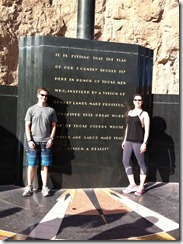




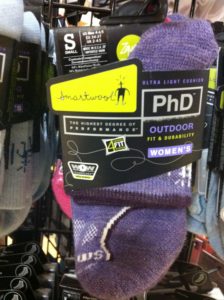

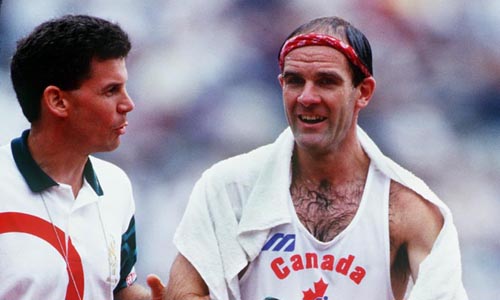
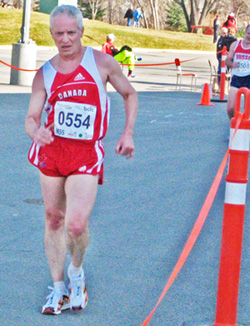 By: Nikki Reiter
By: Nikki Reiter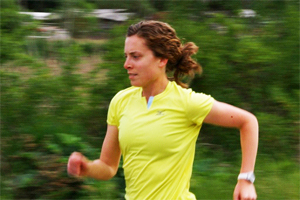
 Our Magazine
Our Magazine
